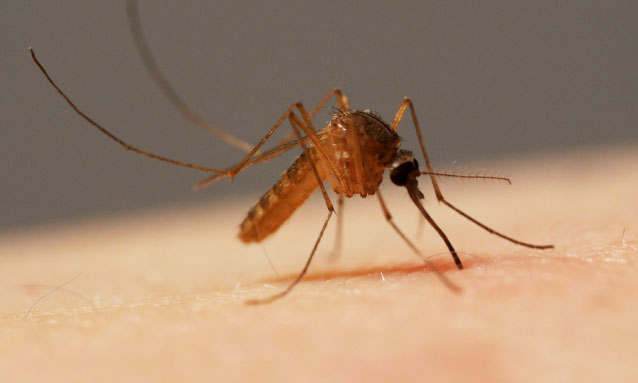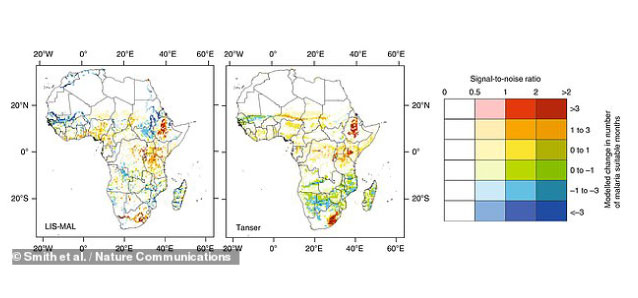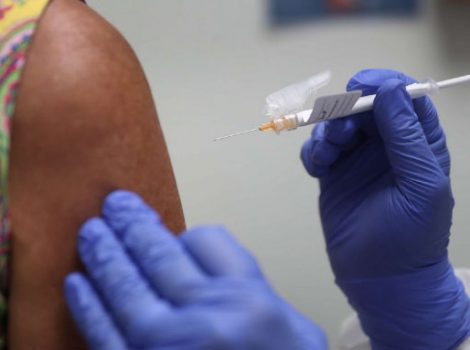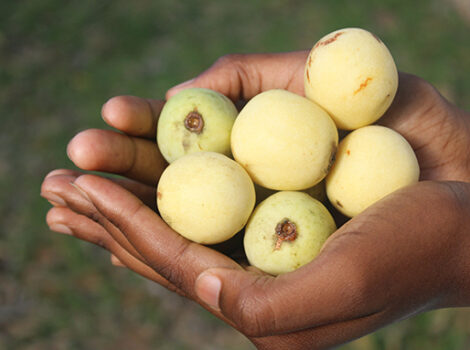
- Malaria is transmitted by mosquitoes that need warm, wet habitats to breed.
- Experts predict that these habitats will change location as the climate alters.
- UK researchers predict that the disease will linger in Botswana and Mozambique.
- Meanwhile, mosquito numbers will fall in much of West Africa and South Sudan.
Efforts to eradicate malaria could be hampered by climate change – which could boost mosquito numbers and bring the disease to new areas, a study has found.
Malaria is a climate-sensitive disease which thrives where it is wet and warm enough to provide the still surface waters needed to breed the mosquitoes that spread it. For more than two decades, experts have warned that the new patterns of temperature and rainfall-induced by climate change could change malaria’s range.
Experts from Leeds now warn that malaria could remain longer in parts of Africa – such as Botswana and Mozambique – while lessening in areas like South Sudan.
Africa faces the lion’s share of the global malaria burden – with the continent facing, for example, 93 per cent of the world’s estimated 228 million cases in 2018.

Experts from Leeds now warn that malaria could remain longer in parts of Africa – such as Botswana and Mozambique – while lessening in areas like South Sudan. Pictured, two models of predicted changes in malaria suitable months each year across Africa. Warmer colours represent an increase in the risk of mosquito populations and cooler colours a decrease.
“[Following] the huge efforts to eradicate malaria from parts of the world, the areas where we observe malaria today are only a part of the total area that would otherwise be suitable for malaria transmission,” said paper author, Mark Smith.
“But if we are to project the impact of climate change on the geography of malaria transmission, we need to develop more sophisticated ways of representing that envelope of malaria suitability both today and in the future,” he added.
“Our approach aims to lay out the environmental risks of malaria more clearly, so that projections of climate change impacts can help inform public health interventions and support vulnerable communities.”
“But this is only a first step, there is a lot more we can do to embed state-of-the-art hydrological and flood models into estimates of malaria environmental suitability and, potentially, even early warning systems of local malaria epidemics.”
Detailed mapping of the spread of malaria is vital for organising public health resources and aid efforts. In the past, scientists have estimated the annual spread and duration of the disease – alongside making future predictions – by looking at rainfall and temperature. But factors affecting how rainfall results in waters suitable for mosquito breeding are complex – including, for example, consideration of how water is absorbed into soil and vegetation, as well as rates of runoff and evaporation.
In their study, the researchers combined a malaria climatic suitability model with a continental-scale hydrological model that represents real-world processes of evaporation, infiltration and flow through rivers.
“This process-focused approach gives a more in-depth picture of malaria-friendly conditions across Africa,” said Dr Smith.
Malaria is a climate-sensitive disease which thrives where it is wet and warm enough to provide the still surface waters needed to breed the mosquitoes, pictured, that spread it. The researchers identified the areas around the Niger and rivers in Mali and Senegal – as well as Somalia’s Webi Juba and Webi Shabeelie Rivers – as being at risk of fostering malaria in the future, despite not being ‘climatically suitable’ at present.
By using future climate scenarios to predict conditions up to the end of the century, the team found a different pattern of future changes in malaria suitability compared to previous works.
“While the findings show only very minor future changes in the total area suitable for malaria transmission, the geographical location of many of those areas shifts substantially,” explained Dr Smith.
“When a hydrological model is used, aridity-driven decreases in suitability are no longer observed across southern Africa, particularly Botswana and Mozambique.”
“Conversely, projected decreases in malaria suitable areas across West Africa are more pronounced.”
The largest change predicted by the team would occur in South Sudan – which is expected to undergo substantial decreases in malaria suitability in the future. For two decades, experts have warned that the new patterns of temperature and rainfall-induced by climate change could change the range of mosquitoes.
While flowing water in such large rivers does not provide a suitable habitat for malaria-carrying mosquitoes, they can create small ponds and floodplains beside their course which form ideal larvae breeding grounds. According to the researchers, this is problematic, as human settlements tend to be concentrated close to rivers.
“The shrinking map of malaria in Africa over that last 20 years is primarily due to huge public health efforts underway to tackle this disease, not climate change,” said paper author and health expert Chris Thomas of the University of Lincoln.
“But malaria elimination is made much more difficult where the climate is highly suitable for transmission, so it is key to know where these areas are now and are projected to be in the future.”
“Linking physical geographic processes to the biology helps us get to grips with some of that complexity.”
“The exciting challenge now is to develop this approach at local scales.”
Malaria: The Facts
Malaria is a life-threatening tropical disease spread by mosquitoes. It is one of the world’s biggest killers, claiming the life of a child every two minutes, according to the World Health Organization (WHO).
Most of these deaths occur in Africa, where 250,000 youngsters die from the disease every year.
Malaria is caused by a parasite called Plasmodium, of which five cause malaria. The Plasmodium parasite is mainly spread by female Anopheles mosquitoes.
When an infected mosquito bites a person, the parasite enters their bloodstream.
Symptoms include:
- Fever
- Feeling hot and shivery
- Headaches
- Vomiting
- Muscle pain
- Diarrhoea
These usually appear between a week and 18 days of infection but can take up to a year or occasionally even more. People should seek medical attention immediately if they develop symptoms during or after visiting a malaria-affected area.
Malaria is found in more than 100 countries, including:
- Large areas of Africa and Asia
- Central and South America
- Haiti and the Dominican Republic
- Parts of the Middle East
- Some Pacific Islands
A blood test confirms a diagnosis. In very rare cases, malaria can be spread via blood transfusions.
For the most part, malaria can be avoided by using insect repellent, wearing clothes that cover your limbs and using an insecticide-treated mosquito net. Malaria prevention tablets are also often recommended.
Treatment, which involves anti-malaria medication, usually leads to full recovery if done early enough. Untreated, the infection can result in severe anaemia. This occurs when the parasites enter red blood cells, which then rupture and reduce the number of the cells overall. And cerebral malaria can occur when the small blood vessels in the brain become blocked, leading to seizures, brain damage and even coma.
For the complete article: http://www.dailymail.co.uk/sciencetech/article-8673987/Climate-change-hamper-efforts-wipe-malaria-changing-mosquito-appear.html
Source: NHS Choices
The full findings of the study were published in the journal Nature Communications.



